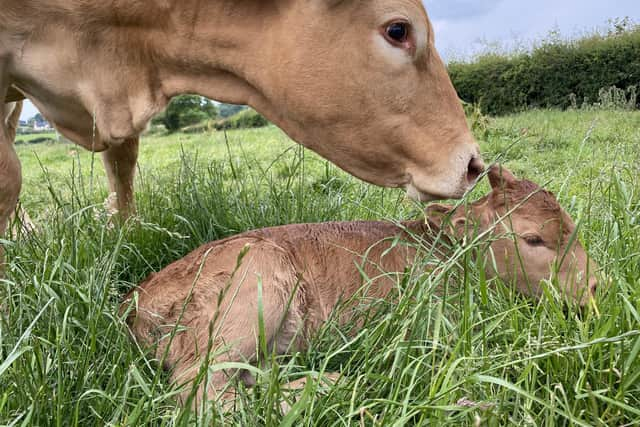Steady progress during 2023 on bid reduce BVD incidence
and live on Freeview channel 276
The focus in 2024 will be to protect and maintain the gains made. The BVD Implementation Group that oversees the NI Programme wants to see additional legislative measures brought in by DAERA, to accelerate progress towards eradication. Herd restrictions are needed so that the risk of the BVD virus being transmitted from infected herds is decreased. The aim is also to align Programme measures with the conditions necessary for BVD freedom as described in the Animal Health Law.
1. Check vaccination plans
As the prevalence of the BVD virus decreases, there is an accompanying decrease in natural immunity following exposure: some herds across NI will have increased susceptibility if there is a break in biosecurity and therefore may need to consider vaccination to induce protective immunity. A vaccination programme should only be stopped following consultation with your private vet, to talk through any risks to the herd that may be present.
Advertisement
Advertisement


2. Take ear tissue tag samples from calves as soon as possible after birth.
BVD testing of ear tissue tag samples is a compulsory requirement in the NI Programme and is likely to continue until eradication is achieved. Keep samples in a fridge for no more than 7 days before dispatching them to an approved laboratory.
3. Isolate and cull BVD Positive cattle at the earliest opportunity.
Consider immediate culling of BVD Positive cattle, particularly if BVD has previously been confirmed in your herd. If retesting, arrange for your vet to take blood samples three weeks after the initial sample was taken (ie three weeks from the date that the tag was inserted in the calf’s ear or from when an initial blood sample was taken).
4. Review biosecurity:
• Reduce the risk of selling BVD infected cattle.
Advertisement
Advertisement
Don’t sell cattle for a minimum of 3 weeks after the last BVD Positive animal has been culled, nor any female that may have been in calf at the time of the birth of the Positive, until her calf has been born and tested with a Negative result for BVD.
• Aim to purchase cattle from herds that have not had BVD infection in the last year.
Aim to reduce the risk of buying in Transiently Infected animals or a ‘Trojan’ female that could be carrying a BVD Persistently Infected calf. Purchasing cattle from BVD-free herds will help your herd to gain BVD-free status in the future.
• Keep cattle away from neighbouring herds.
Avoid grazing cattle on land where cattle from other herds are in adjacent fields unless there is double fencing (with a gap of 3 metres) or stock-proof hedging.
5. Sample and test cattle that do not have a BVD status:
Advertisement
Advertisement
• that have not had a Negative status calf registered against them (BVDUs)
• that have been imported without a valid BVD test; or
• that were born before the start of the compulsory scheme (1st March 2016).
6. Be aware of industry measures to control BVD.
• The voluntary abattoir ban on the slaughter of BVD Positive cattle remains in place
• Retention of BVD Positive cattle is a non-conformance in the FQAS
• AHWNI engagement with and provision of advice for affected farmers will continue.